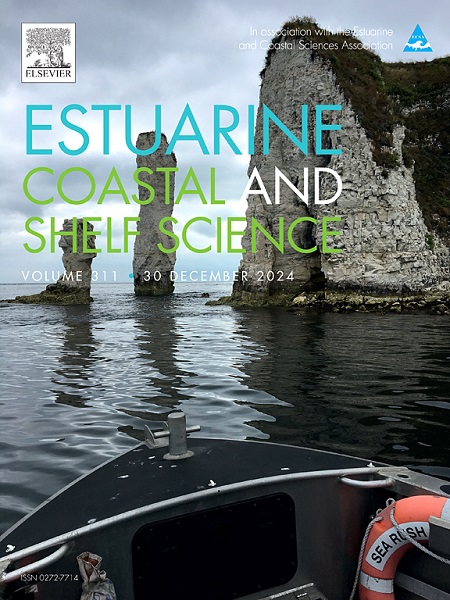History of recurrent short- and long-term coral bleaching events in Indian coral reefs: A systematic review of contrasting bleaching patterns, lessons learned, and future directions
IF 2.6
3区 地球科学
Q1 MARINE & FRESHWATER BIOLOGY
引用次数: 0
Abstract
Climate change has intensified coral bleaching events globally and caused widespread coral mortality; however, bleaching patterns and species susceptibility vary across locations and over time. Understanding these spatial and temporal patterns is vital to predicting the impacts of coral bleaching and guiding conservation efforts. Yet, data on Indian reefs remains limited and fragmented. In this study, we have analyzed 23 years of bleaching episodes on Indian coral reefs (four major reefs and other patch reefs) reported from 1998 to 2020 to understand the geographical footprint of bleaching patterns, species susceptibility differences, and their impact. We found that all four major Indian reef systems (the Gulf of Kachchh, the Gulf of Mannar, Lakshadweep, and the Andaman Islands) have experienced three major bleaching episodes (1998, 2010, and 2016) and multiple short-term bleaching events. Short-term bleaching events (degree heating weeks (DHWs <4 weeks) created differences in species susceptibility, but the disparity among species diminished during long-term bleaching events (DHWs >4 weeks) in all reef sites. Acropora, Porites, Pocillopora, Montipora, and Turninaria in the Gulf of Mannar, Porites and Favia in the Gulf of Kachchh, and Acropora in the Andaman Island and Lakshadweep were the most vulnerable genera during all the bleaching events. In terms of recovery, Porites and other massive forms recovered better than branching forms. We also found a negative correlation between bleaching percentages and DHWs in some reef sites. Furthermore, reported species susceptibility patterns to the 2016 long-term bleaching events in the Gulf of Mannar showed conflicting results among different studies, likely due to one-time surveys conducted during prolonged events. Such surveys overestimate bleaching in heat-tolerant species that persist bleached and miss mortality in sensitive species that die quickly. Although inconsistent data from different study sites hinder the development of robust predictive models, data collected over the past 23 years has been invaluable in revealing patterns of coral community susceptibility and the impacts of bleaching. Our findings underscore the need for repeated surveys to track winners and losers accurately during prolonged bleaching events and the need for systematic and standardized surveys to ensure consistent and comparable datasets for future research and conservation planning.
求助全文
约1分钟内获得全文
求助全文
来源期刊
CiteScore
5.60
自引率
7.10%
发文量
374
审稿时长
9 months
期刊介绍:
Estuarine, Coastal and Shelf Science is an international multidisciplinary journal devoted to the analysis of saline water phenomena ranging from the outer edge of the continental shelf to the upper limits of the tidal zone. The journal provides a unique forum, unifying the multidisciplinary approaches to the study of the oceanography of estuaries, coastal zones, and continental shelf seas. It features original research papers, review papers and short communications treating such disciplines as zoology, botany, geology, sedimentology, physical oceanography.

 求助内容:
求助内容: 应助结果提醒方式:
应助结果提醒方式:


